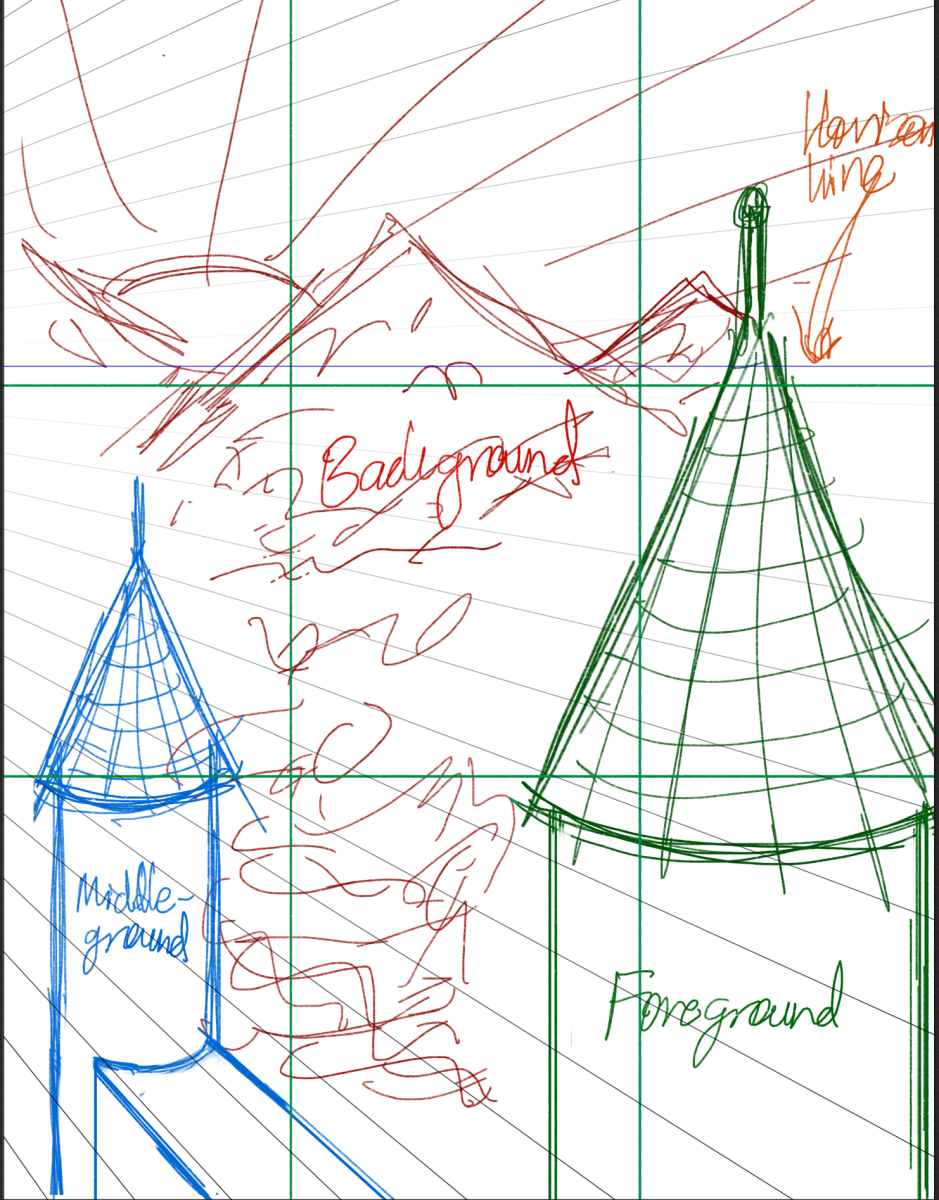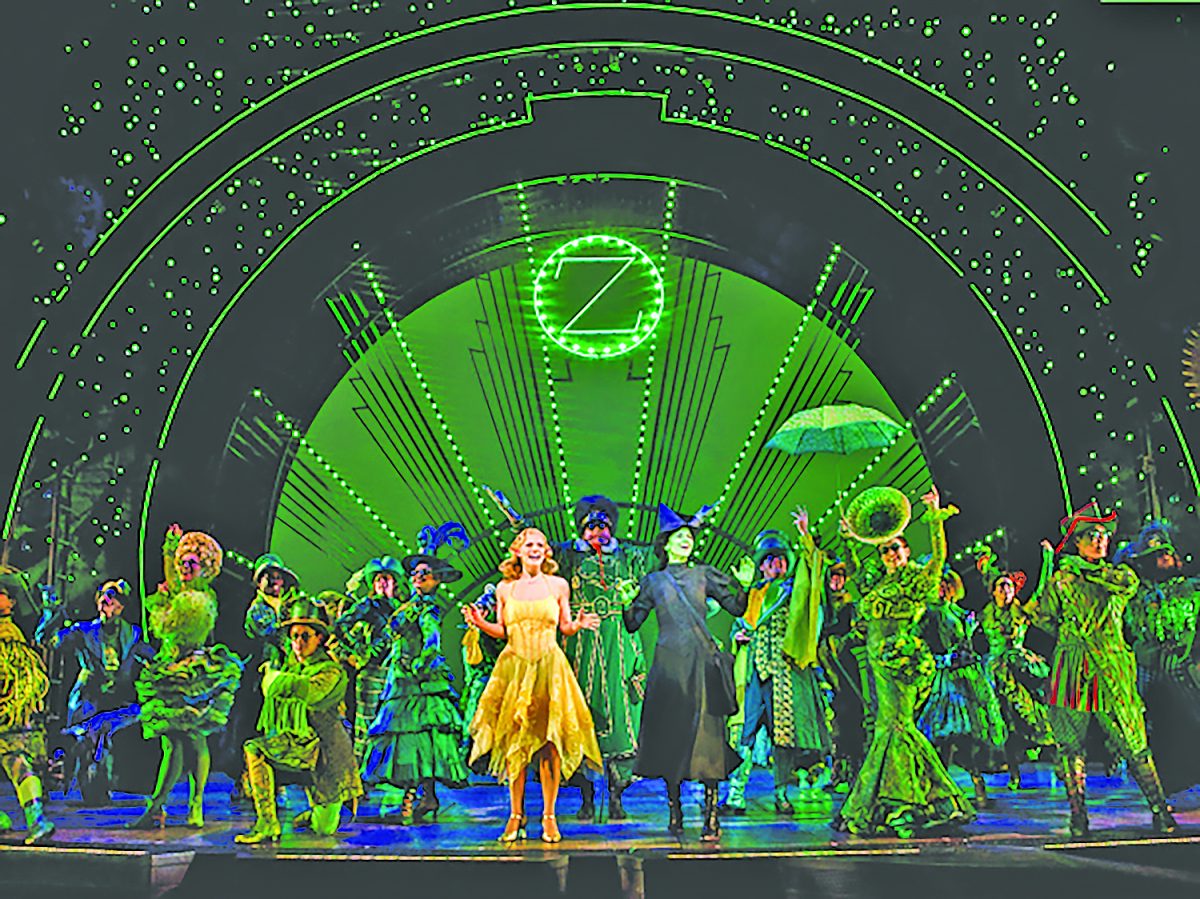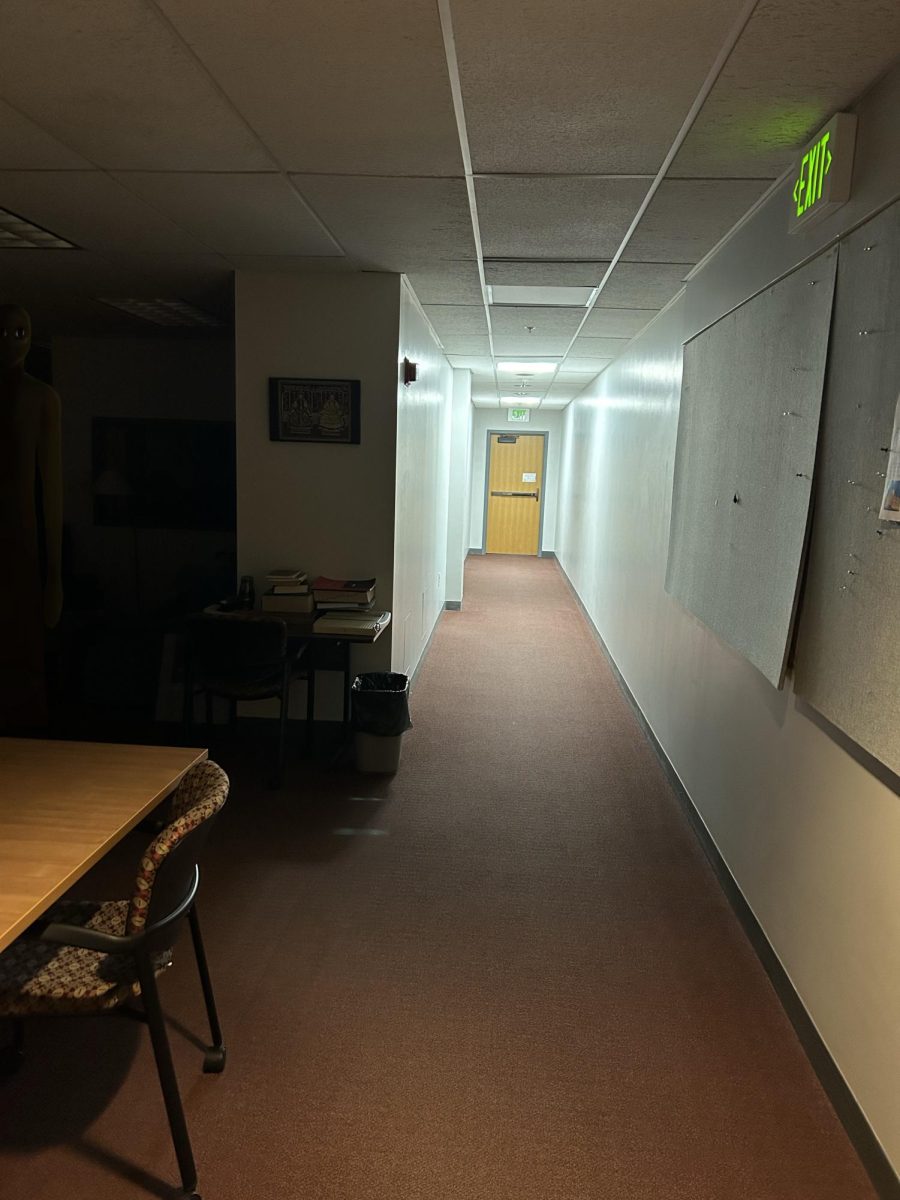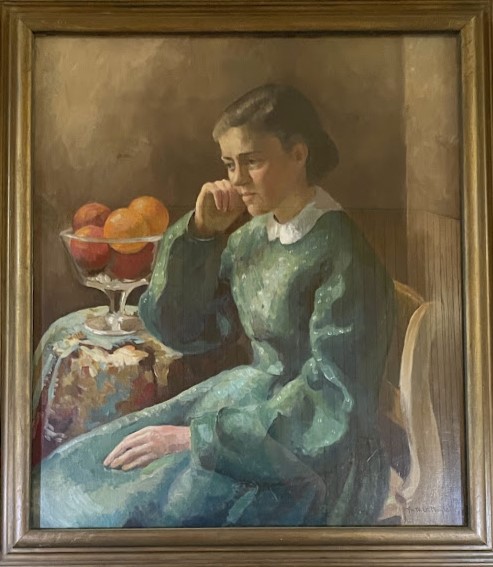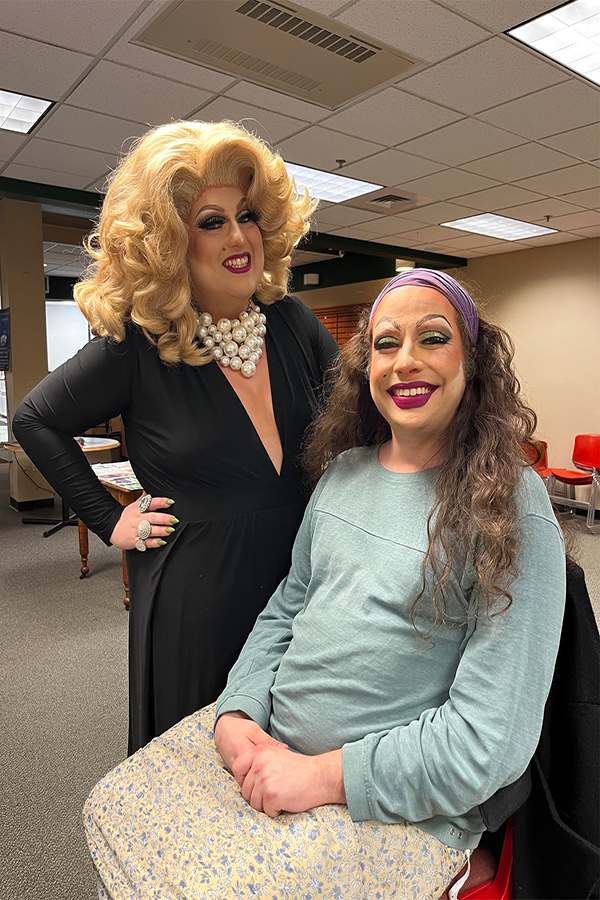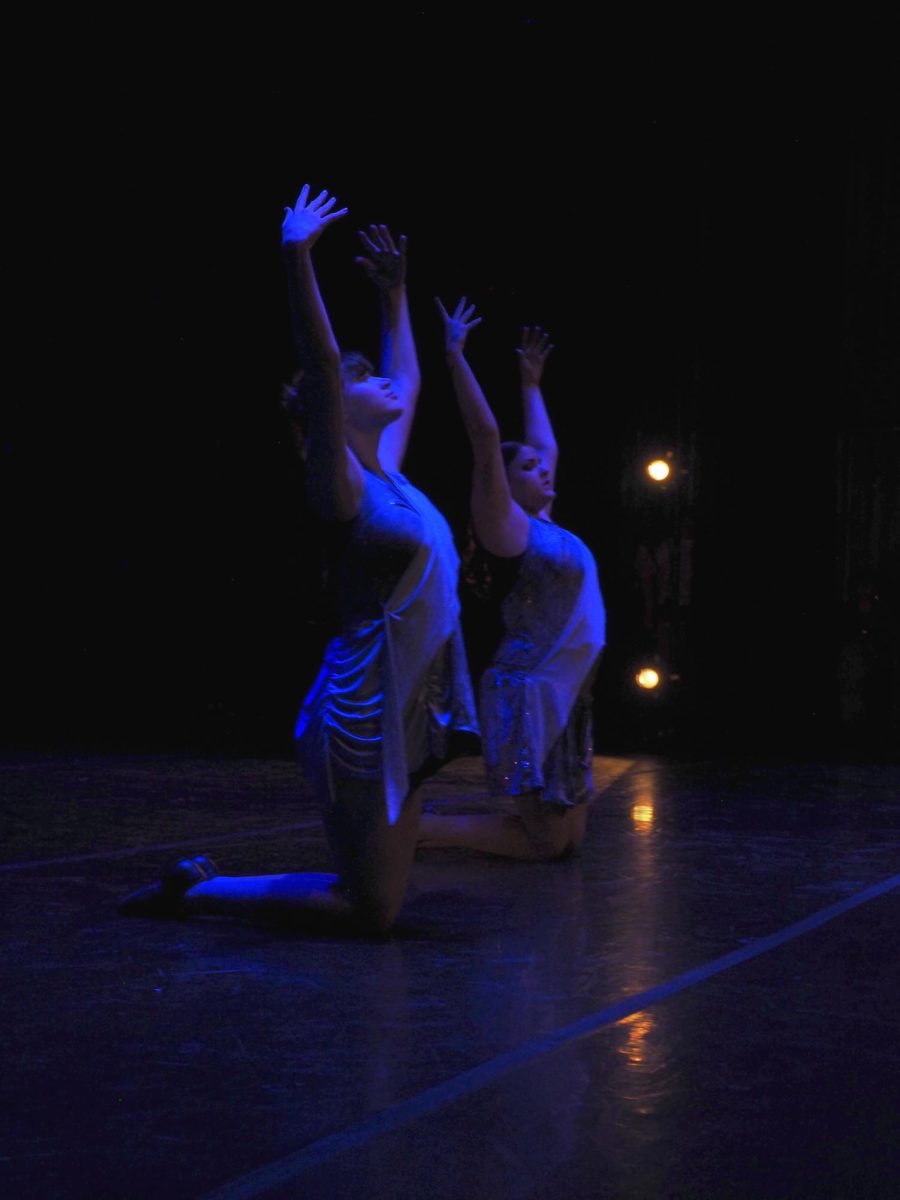“He has a gun!” A man dressed in military fatigues stalks an imaginary enemy down the stairs through the audience. He holds an M16 against his shoulder, finger on the trigger, ready to jerk it backwards. A small red laser darts from the blackened screen on stage to the ceiling. This is a marine. The stage is cast in a melancholy blue light just as a violin and piano begins to pull depressing emotions from the chest and the eyes. A dainty, classic ballerina enters from the right wing, achingly en pointe. She prances and swirls across the stage, the red skirts about her roiling in the air currents disturbed by her movements.
This was one of several different pieces put on display by Roman Baca’s Exit 12 Dance Company Mar. 7 in Dibden. In an attempt to make sense of his experiences at war, Baca co-founded the dance company shortly after returning to civilian life in the United States, in 2007. Prior to his career as a marine, Baca had immersed himself in a world of high grace and discipline since Junior High, going so far as to graduate from the prestigious Connecticut Nutmeg Conservatory for the Arts. “Part of it was the desire to serve my country and part of it was to prove to everyone else that I could do manly things and to prove it to myself, I think.”
In 2003 Baca entered a marine recruiting office with bright red hair and two pierced ears. “You said that the core values of being a United States marine are honor, courage, and commitment. I want to live up to those values and I want to be around people who do too,” Baca told the recruiter, and with that, the male ballet dancer found himself amidst a group of individuals that exuded masculinity. Throughout his career as a marine, Baca rarely spoke about his past history as a ballet dancer. “There were already people preying on every little thing that they could pick out. I was very quiet and I hid my past because I was afraid of what people might think.”
When he reached Fallujuh in 2005, Baca experienced some of the worst fighting during the Iraq war and found himself opening up to his sergeant and several platoon members. He says, “It had been like leading two different lives and talking about it was such a relief.” He began to imagine creating a ballet about a war-torn marine, with the support of his sergeant. These daydreams, however, remained on the back burner when he returned to civilian life until his girlfriend, Lisa Fitzgerald sat him done and said according to Baca, “‘You’re just not the person you were. What’s going on with you? What would you do if you could do anything? I replied, ‘I would start a dance company,’ and she said ‘Let’s do it.’” And so he and Fitzgerald created the Exit 12 Dance Company.
On stage a woman sits, against an angry red light. The music bounds from wall to floor to ceiling. A beat falls heavily. One…two…three…four, five…six times. “Leave me to my dilemma; I have grown weary of your thoughts, these stories, these anecdotes, these euphemisms, and hypothetical scenarios. Let me entertain them alone,” intones a male voice, nearly breathless. She begins to dance. Flowing across the stage like the thoughts and the pain; her hands mirror his consuming desperation, his loneliness, his hopelessness.
The speaker utters brokenly, “What is left? What is left? What the fuck is left?” and the stage goes black.
Just as the music shifts from heavily dramatic to comically light, a woman enters the stage, bathed in green light. Her hair is slicked into a tight black bun and her lacy, dark fuchsia tutu bounces as she bounds from left to right stage. She pivots on her left foot and as she stands to face the audience, snaps open a fan. She flutters it coyly before her face, flirting with the audience for a brief interlude. The audience giggles.
Her successor enters just as the fanning, fawning ballerina exits. The music flows away from whimsicality and towards a classical piece, a mingling piano and violin. This new dancer is dressed in a modest, pink tutu, tights and shoes. She holds herself regally, twirling and leaping from left to right, her smile always intact. Her innocent movements are contrasted sharply by her predecessor’s blatantly coquettish dance. As her piece comes to the end, she bows to the audience at center stage and shuffles, en pointe, to the right wing, and the stage fades to blackness.
With these last two pieces, Baca’s aim was to intermingle the classical, feminine dances of ballet and the emotional, modern poetry dance. Although Baca adores classical, en pointe ballet, he finds himself gravitating more frequently towards modern dance that expresses his experiences at war and conflict overseas. Baca’s hope is that displaying such pieces will not only help him to better grapple with his experiences, but will aid other veterans, and their families, with their struggles as well.



